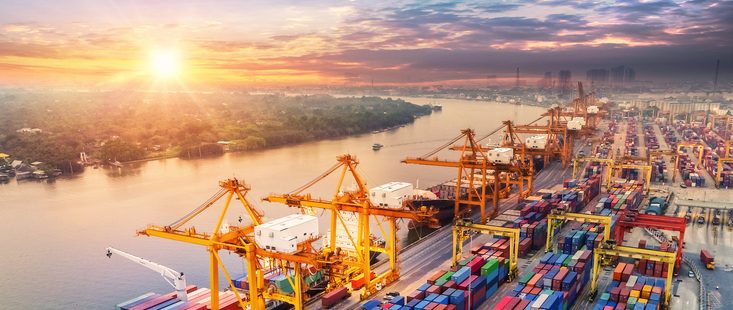Our Opinion: 2023
The changing face of globalisation

Global trade, and the ideal of globalisation as a motor of economic growth took some hefty blows in 2022. Russia’s invasion of Ukraine in February led to a decline in commodity flows to Europe, but also a reset of expectations. In a world where nationalist politics so obviously trumps economic interests, anything can happen. Businesses now prioritise “just-in-case” over “just-in-time” production.
It’s not just Ukraine. Lockdowns in China continued to disrupt supply chains. And continuing US-China tensions *such as America’s strict new controls on the export of semiconductors and associated technologies to China) amplified the sense that geopolitics is swinging against globalisation.
Nor was it solely US-China tensions and Russian aggression that made headlines in 2022. It was also the year that fears of a new US-Europe trade war mounted, with France’s president, Emmanuel Macron, claiming that Joe Biden’s Inflation Reduction Act risked “fracturing the West”. The misleadingly named climate change legislation includes nearly $400bn of green subsidies – for example, tax breaks of up to $7,500 for locally assembled electric vehicles at the expense of imported ones.
According to some analysts, we are seeing an erosion of globalisation and a shift to a world dominated by two or three great trading blocs: an Asian one led by China, perhaps with Russia as its energy supplier; a US-led bloc; and perhaps a third centred on the EU. Other analysts argue that the death of globalisation has been somewhat exaggerated.
In businesses and within governments, the reaction to Russia’s invasion of Ukraine has posed significant supply challenges, but these have largely been met with pragmatism – a reshuffling of supply chains to manage risk – rather than panic.
But there’s definitely a risk that gloom about deglobalisation risks becoming a self-fulfilling prophecy. That risk is higher, given both China’s domestic travails over Covid-19, the EU’s defensive and protective attitude to trade, and America’s new determination to degrade China’s technological progress by weaponizing trade. Washington’s export controls and the dollar payments system “give it a lot of power to drag along reluctant allies.
Globalisation – the growing inter-dependence of world economies driven by the rise in cross-border trade in recent decades – has helped make the world much wealthier. Almost all countries in the world became substantially richer between 1980 and 2019 according to a recent study. Global inequality also declined. The share of the world’s population in extreme poverty fell from 42% in 1981 to just 8.6% in 2018.
Some say that inequality (particularly in high-income countries like the US) is the result of free trade with foreign competition driving down prices and, therefore, incomes. However, It’s easy to blame foreigners. Trade barriers remain a tax on all consumers for the benefit of a specific industry and end up doing more harm than good.
It’s not certain that globalisation has peaked. International trade as a share of global GDP has surged from 25% in 1970 (on World Bank figures) to 50.7% in 2000. It peaked at 61% in 2008. It has fallen sharply before bouncing back a bit above 50%. The idea that we are already in an era of rapid deglobalisation is false.
Part of the explanation for the slowdown in trade growth is the fall in commodity prices, which accounts for 5.7% of the 9.1% decline in the ratio of goods trade to world GDP between 2008 and 2010. Another is the maturing of the Chinese economy. China hasn’t turned away from trade, it has simply normalised its reliance on trade relative to its economic size. Even if the global trade in goods is level, rather than growing, the potential for growth in technology-enabled trade in services remains huge.
One likely winner will be Mexico. It has lower wages than China, an established manufacturing sector anchored by its car industry, and is positioned next to the world’s biggest economy. Already, US imports of Mexican manufactured goods are 60% higher than their pre-pandemic level.
In the UK, exports are down about 5% compared with 2019, in part due to the departure from the European single market. The risk was always that Britain outside the EU would find itself isolated outside three competing trading blocks, the US, EU and China. So it has proved. The UK’s trade deal with the US is off the table with Biden and the deal with India is taking time to conclude. If the vision of a Global Britain is to work, progress needs to be made.
Lockdowns, trade wards between the US and China, and the war in Ukraine has seen global supply chains broken. But globalisation has not ended, merely changed character.
Global trade is not reversing. But it is shifting.
1st February 2023
